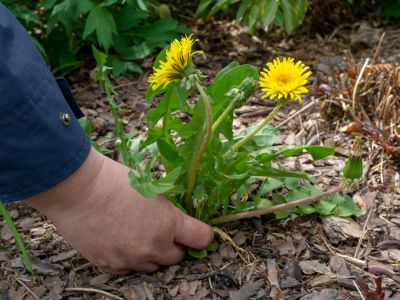June Garden To-do List
Planting the rest of your warm season veggies (corn, peppers, pumpkins, cucumbers, etc.) might be at the top of your list. By this time, the soil is normally warmed so they should grow readily. If these aren’t already planted, try to get them planted during the first week of the month. Other things to do this month include:
Deadhead annual flowers to encourage more blooms.Trim shrubs when flowers fade.Cut back early flowering spring bulbs when foliage has browned.Thin seedlings for recently planted crops, being careful not to disturb the roots of those you are leaving to grow.Intersperse flower seeds among new plantings to attract beneficial insects.Check mulch and replenish as needed.Adjust watering when rainstorms slow. Crops need less water provided when it rains, so keep an eye on the forecast.Seed in warm season grass by the end of the month.Fertilize established lawns with warm season grass in June.
Dealing with Weeds and Pests in the South-Central Region
No matter how we’ve prepared, it would be quite unusual if June gardening tasks didn’t include dealing with some type of weed and damaging bug. If you’ve planted a pollinator garden, blooms may be starting to help attract beneficial insects to combat pest damage. Learn to recognize these helpful flies, spiders, beetles, lacewings, and true bugs. Avoid spraying an area where good bugs have started to arrive. Leave some pests for their food supply. Parasitic insects, like the wasps, lay eggs inside of bad bugs to demolish them. Make them feel at home with patches of bare ground and a few dead leaves for shelter. Hand pick pests when possible and drop into a bucket of water. Use a beer trap in the ground for slugs and snails. Birds and bats are helpful as pollinators and eat some insect pests. Attract bats and night-flying birds with evening and night flowering blooms. Keep your garden and lawn healthy to avoid pest attacks. Get rid of weeds, especially those in the garden competing with your harvest plants. Some weeds harbor pests and disease. Learn to recognize those such as field bindweed, yellow nutsedge, Johnson grass, quackgrass, and Canadian thistle.
